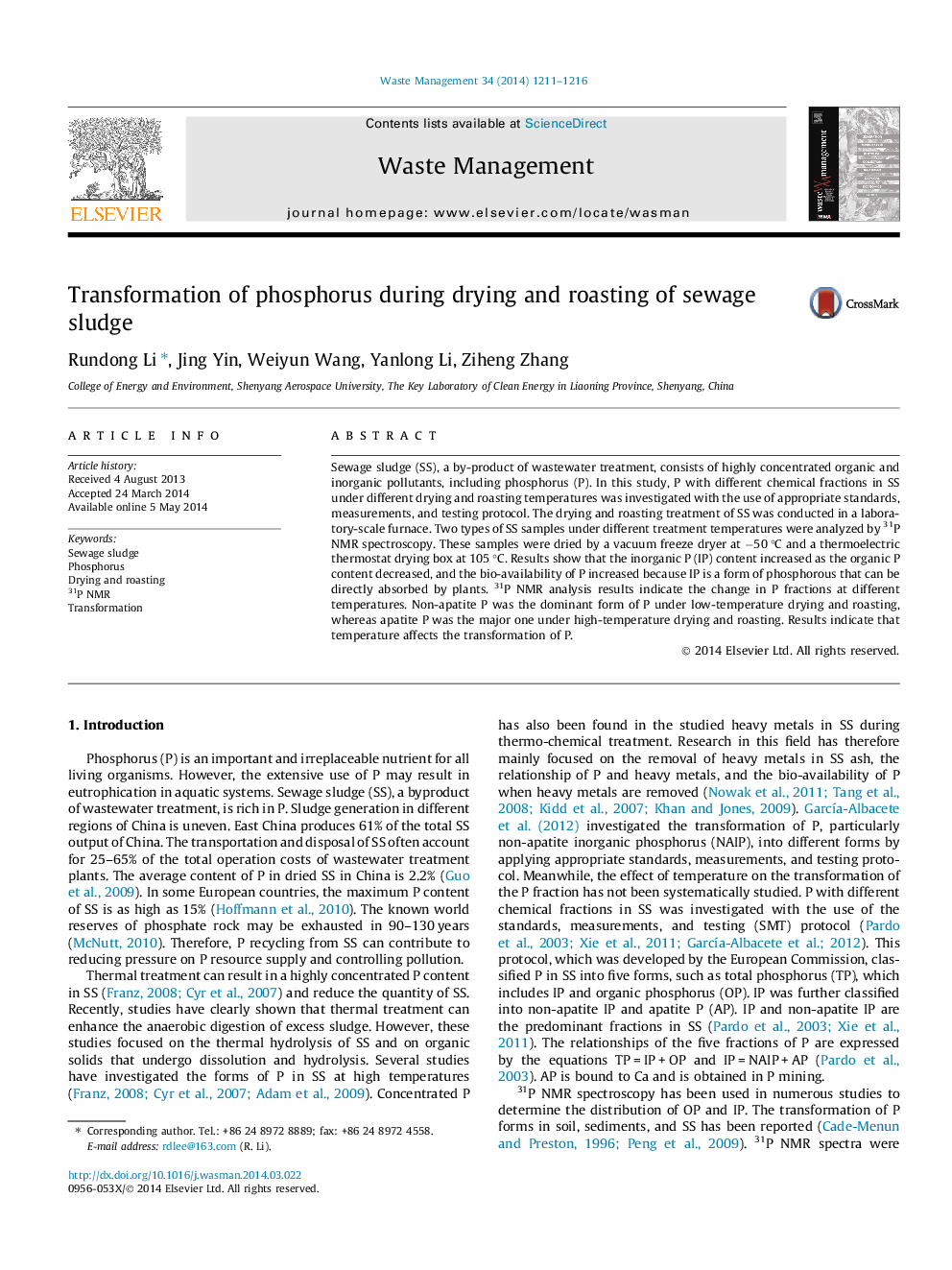| Article ID | Journal | Published Year | Pages | File Type |
|---|---|---|---|---|
| 4471653 | Waste Management | 2014 | 6 Pages |
•Phosphorus could be concentrated by low temperature treatment.•A large of organic phosphorus fraction converts into inorganic phosphorus as temperature higher than 80 °C.•The bio-available of phosphorus increased at the temperature range from 90 °C to 220 °C.•The apatite is formed under low temperature condition.
Sewage sludge (SS), a by-product of wastewater treatment, consists of highly concentrated organic and inorganic pollutants, including phosphorus (P). In this study, P with different chemical fractions in SS under different drying and roasting temperatures was investigated with the use of appropriate standards, measurements, and testing protocol. The drying and roasting treatment of SS was conducted in a laboratory-scale furnace. Two types of SS samples under different treatment temperatures were analyzed by 31P NMR spectroscopy. These samples were dried by a vacuum freeze dryer at −50 °C and a thermoelectric thermostat drying box at 105 °C. Results show that the inorganic P (IP) content increased as the organic P content decreased, and the bio-availability of P increased because IP is a form of phosphorous that can be directly absorbed by plants. 31P NMR analysis results indicate the change in P fractions at different temperatures. Non-apatite P was the dominant form of P under low-temperature drying and roasting, whereas apatite P was the major one under high-temperature drying and roasting. Results indicate that temperature affects the transformation of P.
